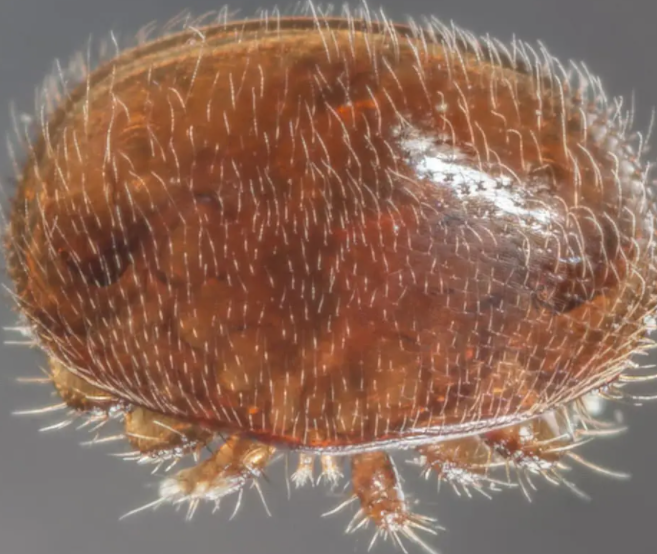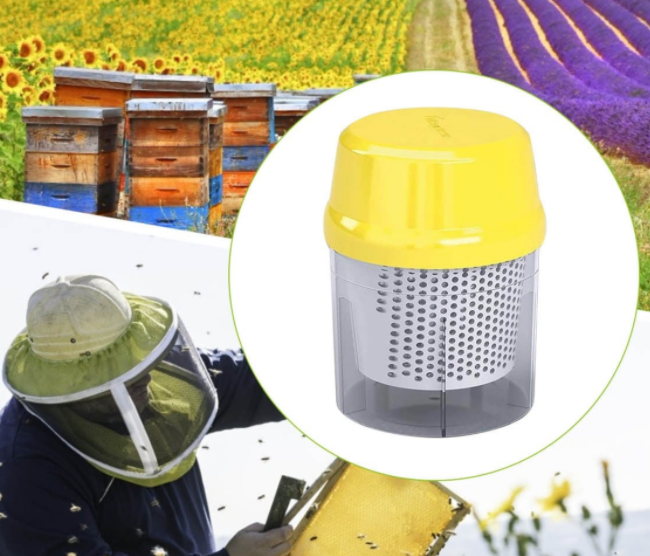Varroa Destructor Sends Signals Within the Hive
Small parasitic mites, called Varroa Destructor, are one of the greatest threats to honey bees. Varroa often send very powerful vibrational pulses to the surface they live in, new research has found. Scientists at Nottingham Trent University, who led the work, claim that mites can use signals to study their surroundings, causing vibrations for environmental research purposes. It is hoped that the fundamental findings will lead to an understanding of how to control and, in some cases, eradicate the invasion of varroa within beehives.
Using a sensitive accelerometer capable of detecting vibration waveforms from a single tick, the team recorded repeated tapping due to a 1mm creature suddenly shaking its body. Researchers are the first group in the world to record such vibrational waveforms from all types of mites. It can also be heard as an audio track when driven through speakers.
Varroa inhabit honeybee colonies in most parts of the world, feed on adult honeybees and larvae, transmit various viruses to the host, and destroy the colony. Researchers searched for evidence of vibrations from potentially infected honeybees, but unexpectedly found that the individual mites themselves provided measurable vibrations. The vibrations caused by shaking a tick are very short and fast-it only takes 50 to 90 microseconds for the vibration to be transmitted-and the signal characteristics vary greatly depending on the material on which the tick stands. Provides the “signature” of the board.
Harriet Hall, a researcher at the Faculty of Science and Technology at Nottingham Trent University, states: Shaking mites is a commonly observed behavior and requires a large amount of energy to produce. This is another sign that mites are intentionally producing this vibration for their own benefit. Stimuli such as temperature and pheromones are intended to direct themselves to the bee and synchronize the development of its offspring with the development of the bee, but little research has been done on vibration, but the team is currently aiming for vibration. We are starting a new research field to further elucidate. A deeper understanding of function is expected to enable us to manipulate behavior to better manage and potentially eradicate mites from honey bees".
This may also affect the study of other mites and mites that may be using similar signals. Harriet Hall continues, “Perhaps you can use the vibration characteristics of the vibration signal to use Vibrations-S sensing technology to remove mites in bee colonies without disturbing the bees by physical inspection of the bees. Search. This may lead to new ways to detect tick invasion early. This allows beekeepers to treat colonies before the mites get out of hand, or to avoid drugs altogether if deemed unnecessary”. An important beekeeping supply is FormicPro which is all natural and greatly reduces varroa within the hive when used properly.
Martin Bencsik, a physicist at Nottingham Trent University, said “We have characterized this kind of new behavior. This is a very basic discovery and can have many unexpected consequences. For the first time, you can see the jerky behavior, the corresponding accelerometer track, and even hear the repeated” knocking “of this creature. It’s as light as a single human hair and 200 times lighter than a bee.
This is the first study to show that a single tick is not only a vibration receiver, but also a vibration transmitter. Due to the enormous energy that ticks spend to deliver it, they are. Probably not a by-product of the vibration of its activity, but deliberately transmitted by the animal for its own benefit. Bencsik continues, “Signals are very common in honeybees. Insects can slowly wind up energy with a kind of internal “spring” system and then suddenly release it, which provides ultra-strong and ultra-short vibrations.


Please Feel free to give your inquiry in the form below.We will reply you in 24 hours.


